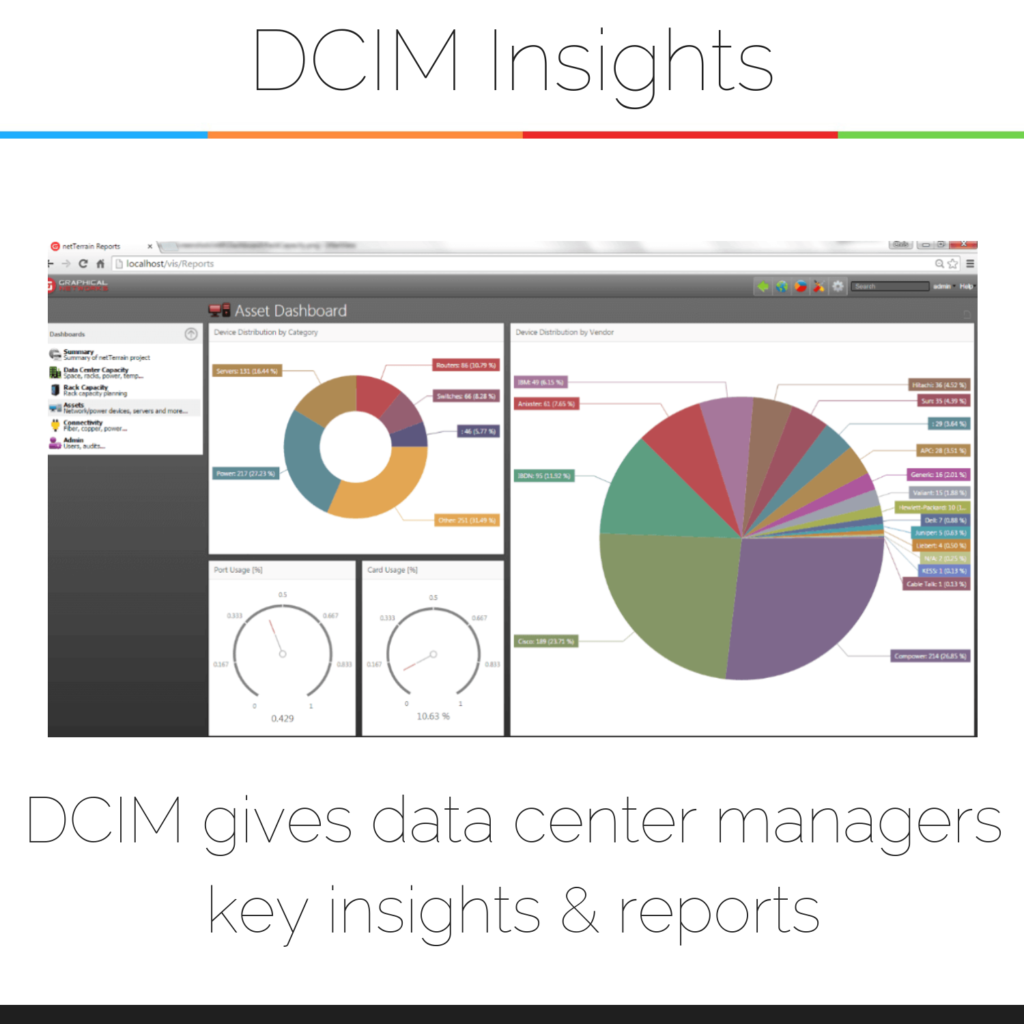
True DCIM (aka data center infrastructure management software) offers far more than sensor data and pretty 3D pictures. What is DCIM, anyways? It’s certainly not just any software that you can use in a data center. In a nutshell: while many data centers use spreadsheets to track assets, DCIM gives data center managers a way to track their infrastructure and the assets within it visually.
DCIM makes it easy to answer the following questions:
- ”where is an asset located,”
- “where can we put in a new server,”
- “do i need new space next year,”
- “how much power are we drawing but not using,”
- “where do i have too many resources,”
- “where do we have too little,”
- “where is the outage and what’s impacted,”
- “how can I decommission this equipment thoroughly,”
- ….and “what’s connected to what?”
Static spreadsheets simply can’t supply this kind of information; Without a way to visually track assets, data centers can’t reach full maturity. When you can answer the above questions with DCIM, an organization benefits in the following three ways:
- Financial
- Availability
- Flexibility
How DCIM Impacts Data Center Budgets
DCIM, when implemented correctly and the right software is chosen for an organization’s needs, results in significant savings. DCIM helps data center managers reduce IT clutter and waste, prevent expensive and prolonged downtime, fully use existing assets, and lower energy consumption.
DCIM can be so transformative to reducing energy usage, and expenditures, that all U.S. federal data centers were mandated to implement DCIM by 2018.
How DCIM Impacts Data Center Availability
DCIM gives data centers information that can make their resources more available. With these key insights, data centers can free up resources, identify underused resources, and identify areas that need more. With DCIM in place, managing space, power, equipment availability is far easier to do efficiently (as well as capacity planning for expansions and future buildouts).
How DCIM Impacts Data Center Flexibility
Data centers are in a constant state of flux and growth. Environments that are always changing require strategies for managing all of this change.
With DCIM in place, data centers can respond to change: operations can be more easily adjusted to respond to new demands on the data center. Enhanced flexibility means that data center operations can be scaled up or down depending upon workflow.
Bottomline? Spreadsheets are an outdated management model that can only do so much when it comes to tracking network assets — and not tracking assets isn’t an option for modern data centers.
Need to lower data center expenses, increase flexibility, or free up resources? You may need to find the right DCIM software for your organization.
